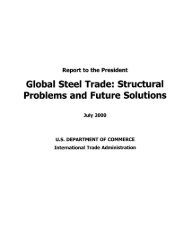Vietnam Environmental Technologies Export Market Plan
Vietnam Environmental Technologies Export Market Plan
Vietnam Environmental Technologies Export Market Plan
Create successful ePaper yourself
Turn your PDF publications into a flip-book with our unique Google optimized e-Paper software.
province. The system would also have a capacity of 10<br />
kilowatts.<br />
Electricité de France and the French Ministry of<br />
Foreign Affairs have pledged $1.5 million to finance solar<br />
power programs in three southern provinces (Gia Lai,<br />
Quang Nam, and Binh Phuoc) from 1999–2002. The<br />
<strong>Vietnam</strong>ese partners to the project are MOSTE,<br />
Electricity of <strong>Vietnam</strong>, the Committee for Ethnic<br />
Minorities, and Solarlab.<br />
The Institute of Energy is preparing feasibility studies<br />
for larger-scale wind farms. One is a 20 megawatt wind<br />
farm in Khanh Hoa province. EVN and Germany’s<br />
VENTIS are in discussions to build the farm under a<br />
build-operate-transfer (BOT) contract. A second wind<br />
farm with a capacity of 30 megawatts is proposed for<br />
Binh Dinh province. The project would be funded by<br />
Japanese aid. EVN plans to fund a third wind farm, also<br />
in Khanh Hoa province, with a capacity of 20 megawatts.<br />
10.4—Wind<br />
The Research Center for Thermal Equipment and<br />
Renewal Energy (RECTARE) is the primary organization<br />
developing and promoting wind-energy technologies. The<br />
center is under the Ho Chi Minh City Technical<br />
University and has been granted permission by the<br />
Ministry of <strong>Plan</strong>ning and Investment to build and sell<br />
renewable energy products.<br />
To date, RECTARE has installed over 800 wind<br />
generators in over 40 provinces and towns throughout<br />
<strong>Vietnam</strong>. The largest number of these units have been<br />
installed near Nha Trang, in Khanh Hoa province on the<br />
south central coast, where 135 units are in use. Nha Trang<br />
is also home to one of only two wind villages in <strong>Vietnam</strong>.<br />
The village was financed by MOSTE and by the Swiss-<br />
<strong>Vietnam</strong> Association. The second wind village is located<br />
on Can Gio island near Ho Chi Minh City, where 50 units<br />
have been installed through the support of the French aid<br />
agency Agence de Coopération Culturelle et Technique<br />
(ACCT).<br />
Nearly all of the units are for small-scale, household<br />
use only. The generators in Nha Trang, for example, are<br />
capable of charging one or two 100-ampere-per-hour<br />
batteries per day. Each unit costs about 5 million dong<br />
($353) to build and install, according to RECTARE.<br />
RECTARE has built all of the generators producing 200<br />
watts or less of electricity. Units producing 500 watts to<br />
90 kilowatts of electricity are manufactured in <strong>Vietnam</strong><br />
but use some imported parts.<br />
RECTARE officials have expressed interest in<br />
purchasing higher-grade, small-scale wind turbines and<br />
generator technology from foreign suppliers. These<br />
purchases would be for 300 watt, 500 watt, or 1 kilowatt<br />
units.<br />
A second group responsible for developing windenergy<br />
technologies is the Institute of Energy in Hanoi.<br />
However, the Institute has neither the technology nor the<br />
equipment to produce units on their own and must be<br />
supplied with equipment by RECTARE in Ho Chi Minh<br />
City.<br />
10.5—Biomass<br />
Biomass and wood fuel account for about 57 percent<br />
of primary energy consumption in <strong>Vietnam</strong>. Besides<br />
wood, agricultural residues and agro-industrial residues<br />
are the main biomass fuel sources. Most of these fuel<br />
sources are used on a household level.<br />
Rice growers create about 45 million tons of paddy<br />
straw annually, accounting for over 90 percent of the<br />
waste. It is used as fuel and as livestock feed. It is also<br />
used as a bio-fertilizer via field burning. Roughly 3<br />
million tons of sugar cane trash, coconut shells and<br />
leaves, and cassava stems are produced annually,<br />
accounting for about 6 percent of the combined waste.<br />
This waste is used primarily as fuel or fertilizer at the<br />
household level.<br />
Foreign investors have prepared feasibility studies on<br />
the use of urban biowastes for power generation, although<br />
no major commercial biomass plants are yet in operation.<br />
There is an Australian-funded project in the works for<br />
Long An province. It will burn rice husks and produce<br />
50 kilowatt hours of electricity.<br />
The government is still considering the $106 million<br />
BOT plant in Ho Chi Minh City backed by American<br />
and British investors. The proposed project would include<br />
construction of a waste plant capable of treating 1,500<br />
to 3,000 tons of waste per day, generating 15 megawatts<br />
of power, and up to 480,000 tons of NPK per year. The<br />
project is in discussion stages with the Ho Chi Minh City<br />
Department of Urban <strong>Plan</strong>ning and Transportation.<br />
The central problem for these co-generation/waste<br />
projects has been price. The cost to produce a kilowatt<br />
hour of power from solid waste is expensive (around 10<br />
to 12 cents per kilowatt hour). However, EVN can only<br />
charge its customers half that amount, so it is willing to<br />
buy power at no more than 6 cents per kilowatt hour.<br />
Until price reform takes place, bio-waste projects (and<br />
other types of renewable—and usually expensive—power<br />
generation) may simply be too expensive.<br />
40 U.S. Department of Commerce, International Trade Administration
















